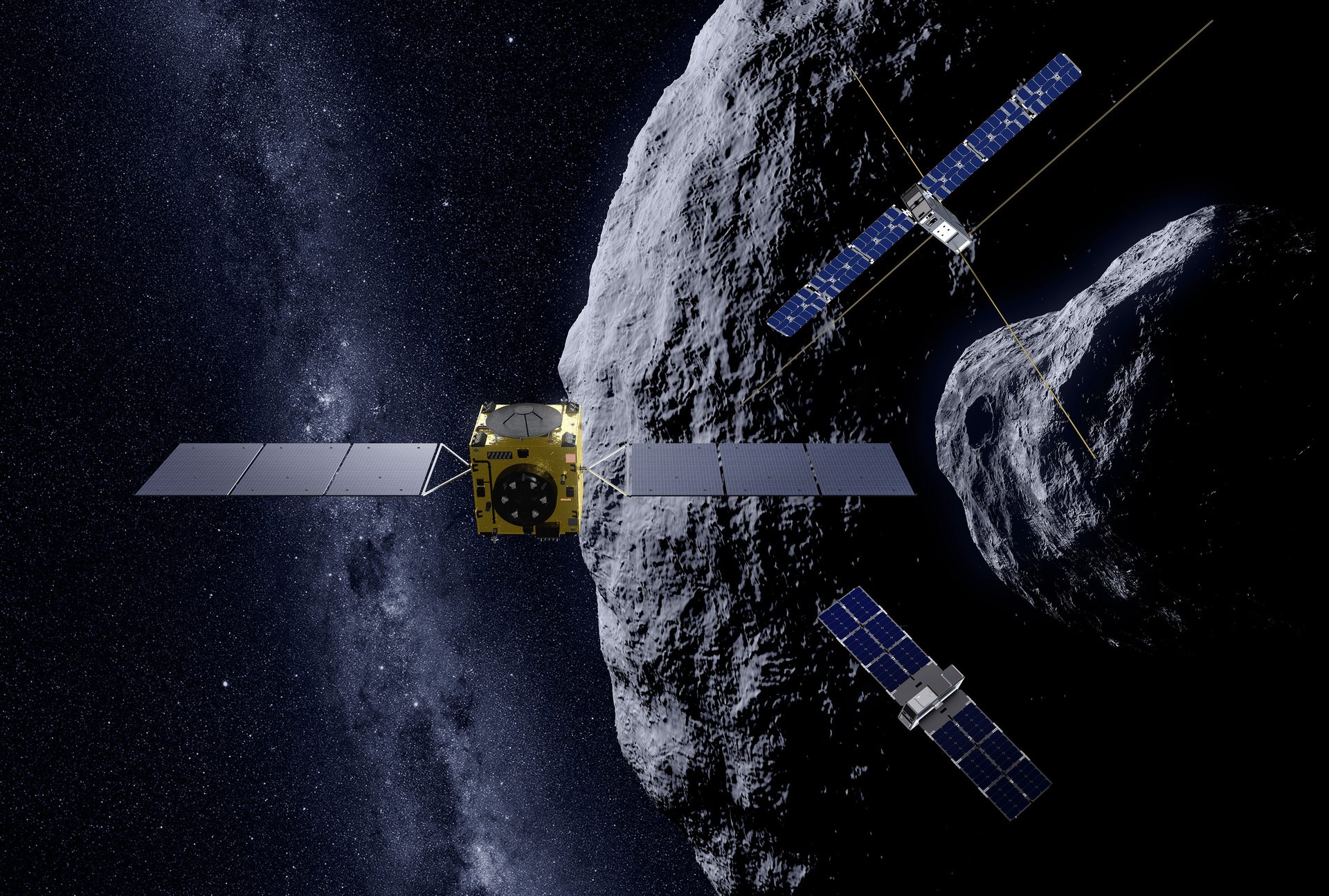Europe’s contribution to an international planetary defence experiment was delivered on 1 September to the ESTEC Test Centre in Noordwijk, the Netherlands, for intense environmental testing.
"This is an emotional moment for our team; it has taken three years of hard work to reach this point," said lead system engineer Paolo Martino.
Transportation and testing
The spacecraft, named Hera, left its production site at OHB in Bremen, Germany, in an environmentally controlled container for the largest satellite test site in Europe. The transportation process was very delicate. Once at the ESTEC Test Centre the entire container was put in an airlocked space to allow the dust to settle and the humidity to equalise before the spacecraft could be extracted.
But the testing process itself will not be so delicate. "Hera will be violently shaken, blasted with noise, exposed to vacuum & temperature extremes & operated as if already in space," ESA Technology wrote on X. Experts describe Hera as having a "desk-sized" body that will be equipped with automated guidance and navigation tools, making it similar to a self-driving car.

An animation of the Hera spacecraft heading towards the Dimorphos asteroid. Credit: ESA/Science Office
Last year, NASA's DART mission crashed into the Dimorphos asteroid to change its orbit – a manoeuvre scientists hope can be used in the case of a more dangerous asteroid hurtling towards Earth in the future. The international collaboration is called Asteroid Impact and Deflection Assessment (AIDA).
A planet-saving kamikaze mission
The European spacecraft is scheduled to launch in October of 2024 to observe the crater left on the Dimorphos asteroid by DART, including its mass, composition and another nearby asteroid. The information gathered should help develop the international planetary defence experiment into a true planet-saving technique.
"This is an extremely short timespan to have a complete deep space mission ready for testing, but we did it – now the next step is to fully check its fitness for spaceflight for its launch," Martin concluded.

